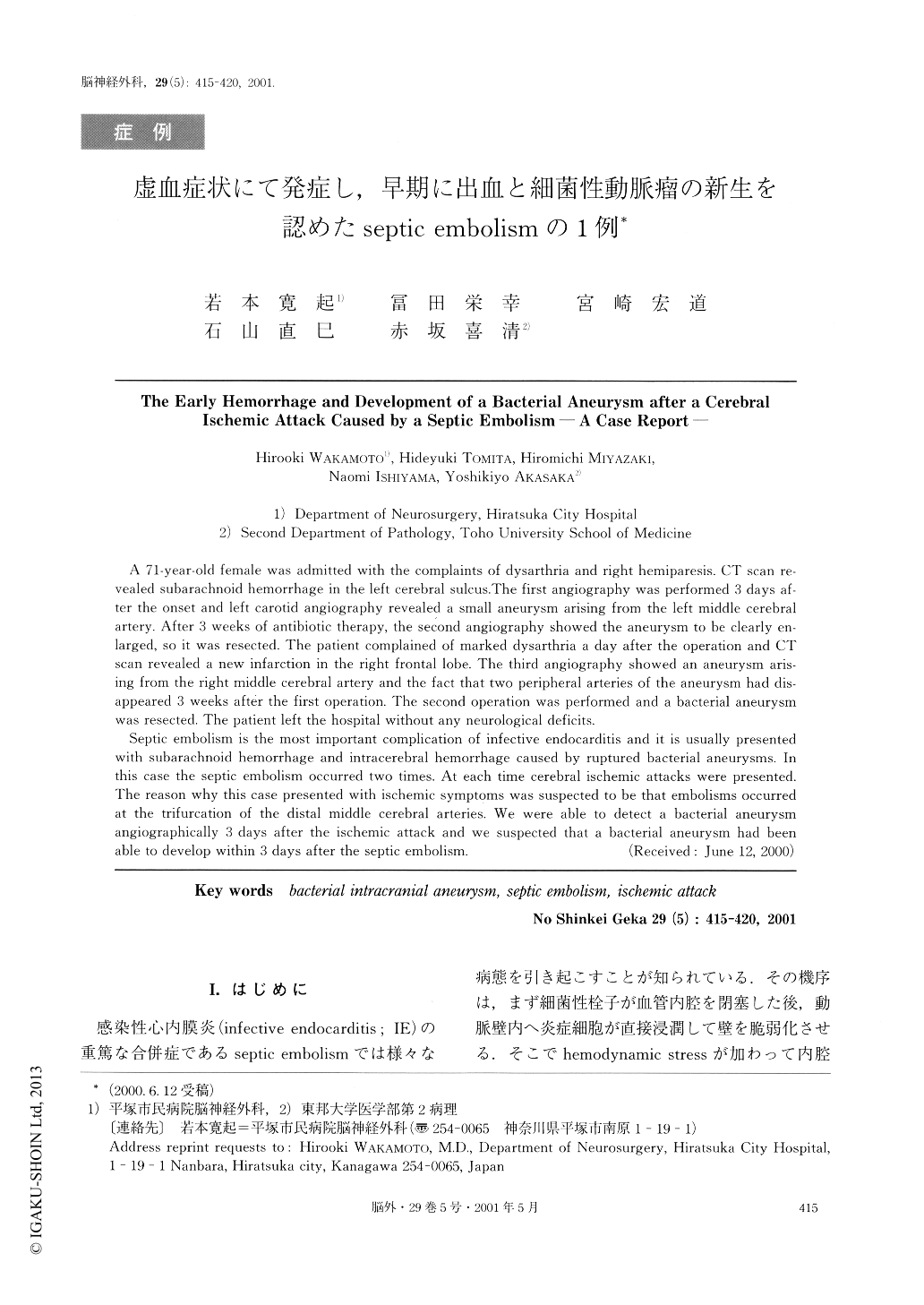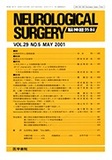Japanese
English
- 有料閲覧
- Abstract 文献概要
- 1ページ目 Look Inside
I.はじめに
感染性心内膜炎(infective endocarditis;IE)の重篤な合併症であるseptic embolismでは様々な病態を引き起こすことが知られている.その機序は,まず細菌性栓子が血管内腔を閉塞した後,動脈壁内へ炎症細胞が直接浸潤して壁を脆弱化させる.そこでhemodynamic stressが加わって内腔が拡大すると細菌性動脈瘤が形成される.しかし栓子が血管を閉塞したときに症状を呈し,引き続いて動脈瘤が発生してきた過程を捕らえた報告例は非常に稀である.今回われわれは脳虚血症状にて発症し,早期に出血を来した後,細菌性動脈瘤の発生を認めた稀な1例を経験した.栓子形成から脳動脈瘤形成,破裂までの期間を知るうえで貴重な症例と思われたので,若干の文献的考察を加え報告する.
A 71-year-old female was admitted with the complaints of dysarthria and right hemiparesis. CT scan re- vealed subarachnoid hemorrhage in the left cerebral sulcus.The first angiography was performed 3 days af- ter the onset and left carotid angiography revealed a small aneurysm arising from the left middle cerebral artery. After 3 weeks of antibiotic therapy, the second angiography showed the aneurysm to be clearly en- larged, so it was resected. The patient complained of marked dysarthria a day after the operation and CT scan revealed a new infarction in the right frontal lobe. The third angiography showed an aneurysm aris-ing from the right middle cerebral artery and thefact that two peripheral arteries of the aneurysmhad dis-appeared 3 weeks after the first operation. Thesecond operation was performed and a bacterialaneurysmwas resected. The patient left the hospital withoutany neurological deficits. Septic embolism is the most important complicationof infective endocarditis and it is usuallypresentedwith subarachnoid hemorrhage and intracerebralhemorrhage caused by ruptured bacterial aneurysms.Inthis case the septic embolism occurred two times. Ateach time cerebral ischemic attacks were presented.The reason why this case presented with ischemicsymptoms was suspected to be that embolisms occurredat the trifurcation of the distal middle cerebralarteries. We were able to detect a bacterialaneurysmangiographically 3 days after the ischemic attackand we suspected that a bacterial aneurysm had beenable to develop within 3 days after the septicembolism.

Copyright © 2001, Igaku-Shoin Ltd. All rights reserved.


